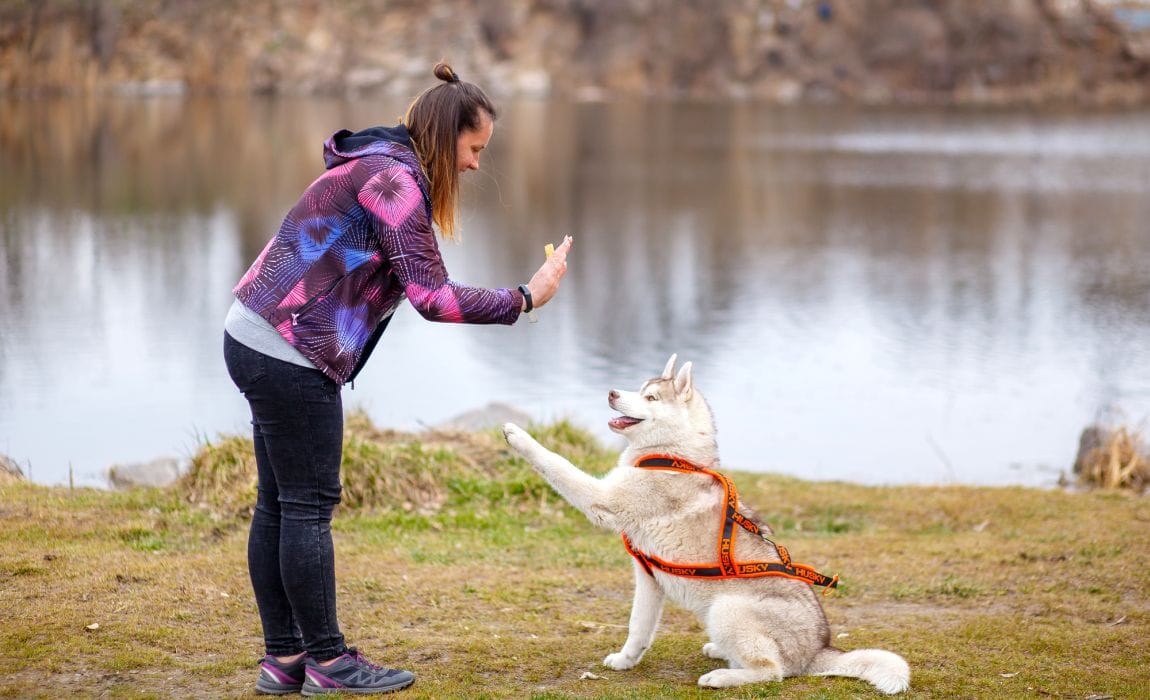Training for puppies tailored to your dog’s temperament.
Training for puppies tailored to your dog’s temperament.
Blog Article
Master Important Commands: Efficient Dog Training Made Easy
Efficient pet training is a fundamental aspect of accountable pet ownership, and mastering necessary commands serves as the structure for an unified partnership between handler and pet dog. Comprehending the nuances of canine habits and the training procedure is crucial; nonetheless, the trip to a well-trained pet dog frequently offers unexpected hurdles that call for interest.
Comprehending Your Pet dog's Actions
To comprehend the nuances of effective dog training, it is necessary to damage down and evaluate your pet dog's actions. Dog training. Comprehending the motivations behind your dog's actions is essential; behaviors can originate from instinct, concern, excitement, or a wish for focus. By observing your pet dog in numerous circumstances, you can determine patterns that may indicate underlying feelings or demands
As an example, a pet dog that barks exceedingly might be expressing boredom, anxiety, or a need for social interaction. On the other hand, a pet dog that displays devastating habits may be seeking stimulation or remedy for stress. Identifying these triggers allows you to customize your training strategy effectively.
Furthermore, it is crucial to consider the pet's type features, as they can influence habits considerably. Some types are predisposed to particular attributes, such as herding or safeguarding reactions, which can affect their reactions to certain stimulations.
Last but not least, uniformity in your feedbacks to your pet's behavior promotes a far better understanding between you and your pet dog. This shared understanding is fundamental for developing depend on and helping with a reliable training procedure that nurtures both behavioral modification and favorable support.
Crucial Commands to Show
Showing vital commands is a fundamental aspect of effective canine training, providing the structure for a well-behaved and responsive pet. These commands not just enhance communication in between the proprietor and the pet dog yet likewise ensure security in different atmospheres.
One of the most critical commands consist of "Sit," which urges your canine to continue to be stationary and calm; "Keep," which reinforces the concept of continuing to be in one place until launched; and "Come," which is important for recalling your pet dog from potentially harmful scenarios. "Down" shows canines to exist down, advertising relaxation and control, while "Leave it" helps protect against pets from selecting up dangerous or unwanted items.
" Heel" is one more vital command that urges your dog to walk closely next to you, enhancing chain manners. "No" serves as a vital boundary-setting command, helping to deal with sites unfavorable behaviors.
Training Methods for Success
Efficient pet dog training counts heavily on utilizing a selection of techniques that provide to both the canine's knowing design and the proprietor's training goals. One vital strategy is favorable support, which involves satisfying wanted actions with treats, appreciation, or play. This technique urges the canine to duplicate those habits, cultivating a solid bond between proprietor and family pet.

Another effective strategy is remote control training, where an unique noise, made by a remote control, notes the exact minute a canine executes a wanted action. This specific timing aids dogs associate the habits with the benefit, enhancing their understanding.
Uniformity is essential in all training methods. Developing clear commands and keeping the exact same cues helps the dog understanding expectations much more quickly. Furthermore, short, engaging training sessions stop boredom and boost retention.
Incorporating socializing opportunities is additionally essential. Revealing pets to numerous settings, people, and various other pets helps them create self-confidence and adaptability.
Last but not least, persistence plays a significant role in effective training - Dog training. Each dog finds out at their own advice pace, and understanding this can lead to a more pleasurable training experience for both the proprietor and the pet. Applying these techniques will certainly set the foundation for efficient canine training
Common Difficulties and Solutions
Regardless of the finest training methods, pet dog proprietors frequently come across usual challenges that can impede progression. One common problem is inconsistency in commands and signs. When member of the family use different commands for the very same behavior, it confuses the pet, causing inconsistent feedbacks. The service hinges on establishing a unified technique amongst all relative, making certain that everyone makes use of the exact same terms and signals.

Furthermore, some pet dogs might exhibit stubbornness or lack inspiration. This can commonly be dealt with by integrating positive reinforcement strategies, such as deals with or appreciation, to urge wanted actions. Customizing incentives to what your canine discovers most motivating can considerably enhance their engagement.
Last but not least, anxiety or anxiety can hamper progress in training. Recognizing indicators of tension and readjusting the training speed as necessary is critical. Utilizing gradual exposure to feared stimuli can aid build self-confidence over time, promoting a more reliable training experience.
Keeping Consistency and Persistence
Consistency and persistence are paramount in canine training, as they develop the structure for accomplishing long lasting behavioral changes. Pet dogs thrive on routine and clear assumptions; thus, preserving a constant approach in commands, benefits, and improvements is crucial.
Equally crucial is the role of persistence. Training a pet dog is not an instant process; it needs time and repetition. Dogs, similar to humans, have differing finding out speeds and may not realize commands immediately. Instructors need to acknowledge this and continue to be tranquil, providing support as opposed to stress. Favorable support plays an important function right here, fulfilling preferred behaviors and helping to cultivate a trusting connection in between the pet and instructor.
Conclusion
Mastering essential commands is essential to effective canine training, fostering improved communication and reinforcing favorable behaviors (Dog training). Inevitably, a well-trained pet not only shows good behavior yet also develops self-confidence, adding to a harmonious partnership in between the pet dog and its proprietor.
Report this page